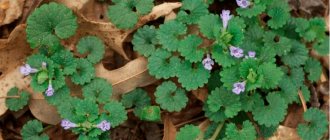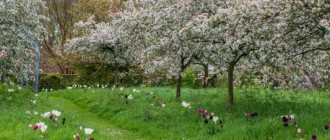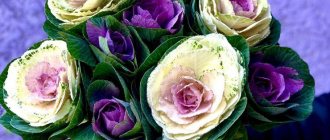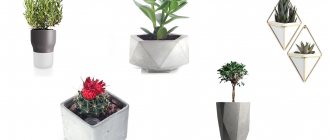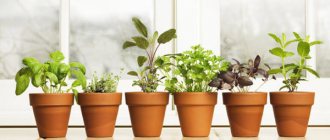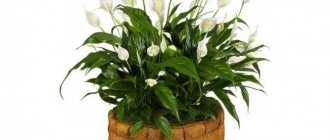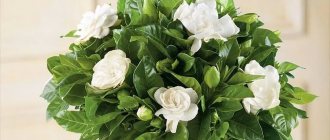What blooms in May? You can choose a truly plethora of plants for a spectacular May flower garden, but we suggest that you focus primarily on unpretentious perennials - you will get lush flowering and save time and energy, and they are so needed on your site in the spring!
Here is a small list of very beautiful May perennial flowers - white, blue, pink, red, yellow - choose to your taste.
When purchasing perennial planting material, pay attention to the plant variety and its flowering period. It can differ significantly among different varieties of the same species.
Iris (iris)
This perennial rhizomatous plant, whose name translates as “rainbow”, begins to bloom in the middle zone in May. Spectacular graceful flowers, reminiscent of orchids, are distinguished by a rich variety of shapes and shades and are adjacent to the same decorative leaves, sword-shaped, fleshy, dark green. At the same time, there are both tall and completely dwarf forms of irises.
Orcas are characterized by high winter hardiness, they are unpretentious to the soil, but do not tolerate heavily moist soils, so it is better to plant them on slopes and hills. These flowers are grown in one place for up to seven years.
- Iridarium - how to create a beautiful iris garden on your site
Irises in garden design can become the pride of the owner. How to create your own iridarium and care for it so that the charm lasts for months?
Video description
In this video you will see examples of using fresh flowers in the interior.
Bulky vases are not suitable for them: it is better to put single flowers in glass vases or even ordinary bottles of different sizes. And even an ordinary jar with a cute bouquet of blueberries, anemones and pansies looks airy and touching!
Airy vases are suitable for spring flowers Source yandex.net
May lily of the valley
The very name of this low-growing herbaceous perennial indicates the time of its flowering. The delicate snow-white, pot-bellied bells of its inflorescences with a magnificent aroma against the background of wide green leaves usually bloom in mid-May and delight the eye for about a month. Recently, unusual varieties of lily of the valley have been developed - for example, with large double flowers or striped leaves.
The flower is unpretentious, frost-resistant, and tolerates partial shade. It loves soil rich in organic matter, a moderately moist place, where it can grow for many years, spreading in all directions.
The entire lily of the valley plant is very poisonous - be careful if you regularly have small children or pets in your area. You also need to be careful when cutting flowers and propagating by dividing the rhizome.
Narcissus
A common monocotyledonous plant of the Amaryllis family. From a botanical point of view, it is a herb with a bulbous root system. It does not form leaves; the bush is represented by several thin stems on which flowers appear. They have a pleasant aroma and a recognizable star-shaped shape. Typically the petals are white with a bright yellow center.
All species of this genus are poisonous and contain a strong alkaloid. In ancient times, essential oil for perfumery was made from the roots; today it has been replaced by cheaper synthetic analogues. It looks decorative when planted in groups; it can be grown as a potted crop.
Phlox splayed and subulate
Phloxes delight in their variety of shapes, sizes and shades. Among them there are bush and ground cover species, spring and summer flowering, annual and perennial - be careful when purchasing.
If we are talking about perennial phloxes that bloom in May, pay attention, for example, to splayed phlox and subulate phlox.
The first (forest, or spreading) is an ideal plant for rocky hills and flower beds located in a well-lit place. In May, loose bushes of this phlox up to 40-50 cm high with branching stems color the garden with the lights of their small bluish-lilac flowers with a strong aroma, collected in corymbose inflorescences.
The awl-shaped phlox (also known as mountain phlox) is a dwarf form, reaching a height of no more than 15 cm, ideal for creating borders and rockeries. Its small five-petalled flowers can be purple, white or pink, and the plantings form dense “cushions” and grow well in width.
- Popular types and varieties of perennial phlox
5 types and 21 varieties of phlox for every taste.
Rare exotics
In temperate climates, adapted varieties of tropical plants do well. One of them is Ornithogalum - a bulbous relative of hyacinth. The second name of the plant is Poultry Plant.
Ornithogalum umbellata
The following types of this primrose winter well and are easy to care for:
- umbrella (narrow thin leaves, white flowers, forms a lush green bush, blooms in April-May);
- drooping (height 40 cm, narrow leaves, tall peduncles, spike inflorescence strewn with small white bells);
- balance (winter-hardy dwarf species 15 cm high with large white flowers, blooms in May).
Sanguinaria terry
Sanguinaria canadensis is a miniature flower that blooms as soon as the snow melts. Flowering is long - about 3-4 weeks. The flowers look like tiny water lilies. This is a member of the poppy family, native to North America.
The plant is shade-tolerant, frost-resistant, unpretentious. It is not affected by diseases and pests and reproduces in plots. In the garden it is planted under trees and shrubs and quickly grows to entire clearings.
Kandyk Siberian
Kandyk is a rare bulbous plant from the lily family, similar in appearance to cyclamen. It blooms in April, and both flowers and leaves with brown spots are decorative. Forms dense bushes 30-40 cm high. The peduncles are tall, on which drooping flowers with bent petals of white, pink, purple and other shades are located. A winter-hardy and unpretentious plant, native to the northern regions.
Early flowers for the garden have one main advantage - they are highly anticipated when they bloom. They are the ones who symbolize the arrival of the long-awaited spring, even if there is still snow in the yard and the frost gets stronger at night.
Tulip
Well-known and beloved tulips have so many shapes, varieties and varieties that even the most capricious gardener will choose a flower to suit his taste - including the flowering period.
In May, you will be able to delight with the bright colors of simple and double early tulips, Triumph tulips, Darwin hybrids, lily-flowered tulips, Rembrandt tulips, some fringed and green-colored ones... And if you don’t know how they differ from each other, our detailed material is for you to help.
- 15 main types of tulips - do you have everything (photos, descriptions, varieties)
All classes of tulips in one article
Hyacinth
It is a rare primrose that can boast a flower of such an unusual shape and rich palette of colors as the hyacinth. This is a truly universal plant that can be used not only in the garden, but also in the apartment. However, with all the positive qualities of hyacinths, they also have one significant drawback: these flowers require special attention and care. In particular, hyacinths require mandatory feeding at least three times per season: after emergence (25 g of ammonium nitrate per 1 sq.m), after the appearance of buds (20 g of ammonium nitrate, 40 g of superphosphate, 30 g of potassium sulfate per 1 sq.m) , after flowering (40 g of superphosphate and 40 g of potassium sulfate per 1 sq.m.).
If you really want to admire the spectacular clusters of hyacinth flowers, but are not sure that you have enough knowledge and skills to grow it in open ground, you can always force the plant at home.
- Forcing hyacinths at home: everything is easier than it seems
Growing hyacinth is not a problem. It is much more difficult to achieve flowering by the desired date. We'll tell you how to make hyacinths bloom for the New Year, Valentine's Day or March 8th.
Clematis
The exotic perennial vine clematis has taken root well in our mid-latitudes. Among its many diverse species, varieties and hybrids, you may well find more or less unpretentious forms that begin flowering as early as May.
Clematis needs regular watering (at least 1-2 times a week), loosening the soil, timely removal of weeds, organic feeding 2 times a month throughout the growing season, pruning and covering for the winter. In addition, this plant loves light, nutritious and loose soil, and does not tolerate strong winds and stagnant water. But if these requirements are met, clematis will certainly delight you with abundant flowering.
- The most unpretentious varieties of clematis with photos and descriptions
A selection of clematis varieties that novice gardeners should take a closer look at.
Iridodictium
If you want to add a little more variety to the look of your spring flower beds with something more sophisticated and sophisticated, look no further than Iridodictium. This flower is so similar to its older brother the iris that it is very difficult to confuse it with any other primrose.
Iridodictiums are low 10-15 cm plants with 5-7 cm flowers that are quite large for their size. A characteristic feature of this decorative crop is that the narrow, hard leaves of iridodictium appear simultaneously with the buds. Only one flower opens on each plant. It can be white, yellow, lilac, violet or blue.
- Bulbous irises: all about proper planting and care
Iridodictium, juno and xyphium are unusual irises for an interesting garden.
Thrift
This cushion-shaped perennial is decorative not only with small bright flowers that come in different shades (from white to dark red), but also with a green mass that grows in the form of a dense bush of narrow leaves and fluffy peduncles.
The plant reaches a height of 20-50 cm, depending on the species. It begins to bloom as early as May and, under favorable conditions, does not fade until September. Loves light, slightly acidified soils. Easily propagated by division and cuttings. It will look especially impressive in borders, rockeries, and containers. In winter it requires shelter to prevent freezing.
Selection of ampelous spring flowers for garden decoration
Canopy plants will provide significant assistance in the design of the site. It’s easy to choose beautiful flowerpots, original baskets, elegant flowerpots for these charming representatives of the flora. The range of ampelous flora representatives is large enough to find good options, taking into account:
- landscape design style;
- type of house facade, garden structures;
- color harmony;
- personal preferences.
With the help of weaving, climbing flowers, you can not only create an original design, but also give the landscape a certain character. For example, delicate shades of verbena will create a romantic atmosphere, bright begonia, petunia will become a source of good mood, add cheerfulness, etc.
Delicate shades of verbena will create a romantic atmosphere
When choosing hanging flowers for the garden, you need to focus on the characteristics of the containers in which the plants will be placed. They must ensure that the merits of these pets are demonstrated to advantage.
Cascade petunia surfinia looks ideal in tall flowerpots; calibrachoa and tumbelina grow well in wide flowerpots. You can plant pelargonium in a wide floor pot, and place begonia in a hanging container. A wicker basket will be mastered by fuchsia or bidens, an elegant flowerpot will become a successful frame for verbena, etc.
Petunia looks perfect in tall flowerpots
Dicentra
This perennial belongs to the poppy family, although it is not at all similar to the mentioned flower. Plants of this genus are famous for their carved leaves and original heart-shaped flowers, which can be white, crimson, pink and red, and bloom from early May to mid-June (and some until autumn).
All types of dicentra are quite frost-resistant. They prefer light, well-drained, moist soil rich in humus; Grow best in sparse shade. After flowering, the aboveground part of both “falls asleep” until spring. Sometimes dicentras bloom again in August-September.
In landscape design, the plant is used to create high borders and rockeries, as well as for single plantings. Dicentra care involves mulching the soil and irregular watering on especially dry summer days.
- Growing dicentra in the garden
Everyone knows this amazing plant with clusters of hearts hanging from the branches. But how to grow it?
Delicate snowdrops - the awakening of nature
The Slavic legend says how one day the old woman Winter decided not to let Spring come to earth. The flowers drooped from fear, one snowdrop was not afraid and opened its petals. The sun saw him, warmed everything on earth with its warmth and cleared the way for the beautiful Spring. Since then, spring and snowdrops have been inseparable.
The first flowers of spring, which in many areas are also called snowdrops, are nothing more than dream grass, corydalis or lumbago. They say that once upon a time the leaves of the lumbago were so large and wide that Satan, who was expelled from paradise, could hide behind them. But the Archangel Michael, discovering his hiding place, threw an arrow at him. And the leaves of the dream grass remained shot through - cut into thin slices. The lumbago also blooms even at sub-zero temperatures. The whole secret of this, it turns out, is in the cup of the flower. It, like a concave mirror, collects the sun's heat. And the temperature inside the cup is +8 degrees.
Anemone (anemone)
Anemone is a delicate and very fragile-looking, but very winter-hardy flower that can withstand the vagaries of the weather. Depending on the variety, the color of anemone flowers and their shape may vary - you can plant white, red, blue, purple, yellow forms on your site.
In the wild, anemones grow in shady forest lawns, in damp mountain valleys and even in alpine meadows. As an unpretentious spring perennial in your garden, you can plant oak, crown, tender, buttercup, and forest anemone. Their creeping rhizomes grow quickly, and large calyx flowers (or “daisies”, depending on the species) of a round-oval shape, if you select the varieties successfully, will delight you with long-term flowering.
If you want May flowering, look for spring-flowering forms of anemone, otherwise you will have to wait for bright colors until autumn.
Pushkinia
These are beautiful, delicate blue spring flowers of the Liliaceae family. The homeland of the plant is Asia Minor and Western Asia, the Caucasus. There is a pale blue, almost white type of Pushkinia with thin dark blue veins in the center of the petals - Pushkinia hyacinthoides, which, along with the blue Pushkinia prolescoides, is an early spring species.
Did you know? Pushkinia was named after the famous Russian botanist researcher Count A. A. Musin-Pushkin, the discoverer of this flower.
Pushkinia is always elegant and unpretentious, grows quickly, combines with all spring flowers, looks good in complex compositions, shading and creating contrast with bright and juicy inflorescences of different types of flowers.
In spring, all of the listed flowers are the first to bloom, which is why they all have the name primroses. Whatever combinations of these primroses you choose, their care is minimal, and the pleasure of seeing multi-colored buds blooming in early spring at the beginning - mid-March - is really great. In addition, many of them smell wonderful, which is also a good reason to plant on your site, if not all of the given types of flowers, then at least some of them - you definitely won’t regret it!
Mountain cornflower and one-flowered
This perennial plant, familiar to many, is distinguished by its ease of care, undemandingness to soil composition, and resistance to drought and disease. All this, combined with very beautiful and fairly early flowering, makes cornflower a popular crop among beginning gardeners.
Most often they are used in naturgardens, in meadow-style plantings and on Moorish lawns. Plus, today many varieties of cornflower have been bred not only in the usual blue color, but also in pink, white, and soft lilac shades.
- Growing cornflowers in the garden
Cornflower is considered a wildflower, but this does not mean that it cannot be planted in a flower garden.
Daffodils
Another first spring flowers - daffodils.
Although daffodils are significantly unpretentious to grow, they are best suited to damper places in the garden with an average degree of shade. A month before planting, the bud is dug up and fertilizer is applied.
To achieve maximum visual effect, during planting it is worth planting at least ten bulbs in close proximity to one another.
In general, regarding the choice of a place for primroses, moist soil and relative shade, preventing the aggressive influence of sunlight, are exactly what is needed. Especially if this manifests itself in the vicinity of shrubs, trees and ground cover plants.
And since water should not stagnate at the site where primroses are planted, the area should be slightly elevated. From an aesthetic point of view, it is advisable to plant spring primroses in the middle of the flower garden or in the background, between perennials.
As a result, at the beginning of spring the garden will be full of colors, into which spring primroses will breathe life, and as they fade they will be hidden by other flowers. In general, since different varieties of the same flowers bloom at different times, to “extend” flowering you just need to choose them correctly. Then alternating flowering will delight both the eye and soul of the gardener for a long time.
All about growing perennial flowers. Good luck, gardeners!
Scilla (Scylla)
Due to the coinciding flowering dates, scilla is often confused with snowdrop, although in reality they are different (albeit closely related) plants. Typically, scylla flowers are deep blue in color, but there are also varieties with pink, purple or white buds.
However, even if you catch your eye on a white forest, you can easily distinguish it from a snowdrop. Firstly, Scylla has 6 petals, not 3, like Galanthus. Secondly, on one stem of a scilla there are several flowers at once, while the stem of a snowdrop is crowned with a single flower.
Primroses are amazing plants that can decorate any garden. What early spring flowers do you grow on your plots?
Crocus
Although the beauty of the crocus cannot be called particularly elegant or exotic, it is rare that a spring garden composition is complete without these crumbs. The flowers of the plant are single, but sometimes there are specimens with 2-3 stems growing from one corm. Conventionally, all varieties of crocuses are divided into two large groups: blue-flowered (from light lilac to deep purple in color) and yellow-flowered (from pale yellow to orange).
You can distinguish a crocus from a snowdrop and a scilla not only by the color of the flowers, but also by the appearance of the stem. Actually, the latter does not develop in the crocus - flowers and leaves grow directly from the membranous scales emerging from the “spout” of the bulb.
What flowers can be seen in Crimea
In Crimea, spring comes much earlier, so many tourists visit the peninsula to admire the bright colors. In April and May you can see the following plants:
- periwinkle;
- hellebore;
- muscari;
- pansies;
- daffodils;
- clean;
- daisies;
- tulips;
- primrose;
- magnolia;
- snowdrops;
- crocuses;
- goose onion;
- scroll.
In addition to popular types of crops in Crimea, you can find flowering shrubs and trees in April.


